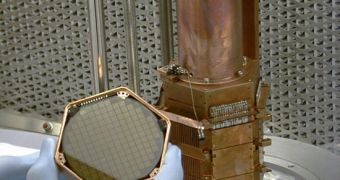For the last decade or so, astrophysicists have been trying to find signs of the elusive dark matter, the stuff believed to make up about 90 percent of the mass of the Universe. Its existence can only be inferred through the gravitational effects it has on galaxies and other celestial bodies around it, but physicists hypothesized some time ago that it might be made up of WIMPs, or weakly interacting massive particles. One detector built for identifying these particles may have just hit the jackpot.
The scientific initiative operating the Cryogenic Dark Matter Search II (CDMSII) instrument recently published a study that reveals details of two instances in which dark matter may have actually been discovered. One of these events is still under question, as critics say that the results may have been triggered by normal particles interacting in weird ways. If the readings are confirmed, however, then the decade-long quest for the elusive matter may have just ended. The findings could also help confirm a number of theories on the Universe's origins, and also explain why galaxies interact the way they do.
The CDMSII data also suggests that dark matter and its composing WIMPs may very well be within the energy range of the Large Hadron Collider (LHC), the largest scientific experiment in the world today. The results will have to be peer-reviewed, but the grand confirmation will most likely come from the particle accelerator itself. If all goes well, we could have definite proof on the existence of both the Higgs boson and dark matter by 2011-2012.
The dark matter detector operates at nearly absolute zero degrees Celsius, as it is chilled to -273.15 degrees Celsius. The experiment is based on crystals of germanium and silicon, which are believed to be especially apt at detecting this particular type of matter. WIMPs are believed to be particles that can be as large as an atom, but that only reveal their presence under very specific conditions, by interacting with other elementary particles around them.
According to the study team, which is keeping quiet about its own findings until they are peer-reviewed, there is a 75-percent chance that both events it noticed were caused by WIMPs, and a 25-percent chance that they are both false-positives, caused by stray radiation, and other commonly occurring phenomena, Nature News reports.

 14 DAY TRIAL //
14 DAY TRIAL //